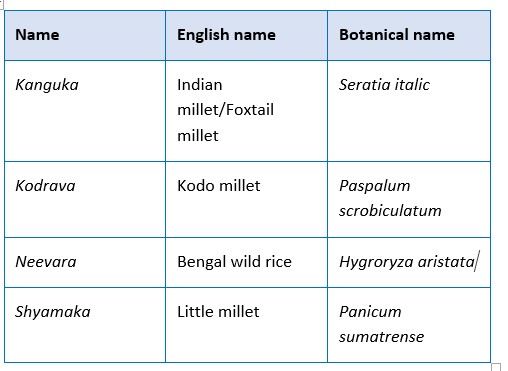Millets and its benefits according to Ayurveda
DOI:
https://doi.org/10.21760/jaims.9.6.36Keywords:
Millets, Siridhanya, Kudhanya, Kshudradhanya, Shree AnnaAbstract
In the recent days we have been seeing a lot of buzz and a lot of researches been carried out regarding the usage of the millets and its potential uses mainly with regards to its disease preventing properties especially in cases such as Diabetes, Hypertension, and even in Cancer. In Kannada, millets are called as Siridhanya which means that which is rich in useful and essential properties, in Ayurveda millets are called as Kudhanya or Kshudradhanya, it is called so because these grains belong to grass species and they usually does grow to a very lengthy height rather confined to a smaller heights, hence the name Kudhanya or Kshudradhanya. In the recent days even the Karnataka Government has understood the importance of millets and have started to promulgate by dedicating a separate day calling a ‘millets day’ to showcase its important health related values. Apart from the recent discoverers, Ayurveda has mentioned about the millets in the name of Kudhanya or Kshudradhanya many years before itself. We can find its mentioning in Charaka Samhitha, and other Nighantus such as Bhavaprakasha Nighantu, Dhanvantari Nighantu etc. Hence this article highlights about the importance of Millets and its mentioning about its properties in Ayurveda and its mode of action in several diseases.
Downloads
References
Rao D, Bhaskarachary K, Christina A, Devi S, Tonapi V. Nutritionaln and Health Benefits of Millets. ICAR, editor. 81(5):111.
Priyavat Sharma, Dravyaguna Vijnana Vol 3, Chapter 2, Varanasi, Chaukamba Bharati Academy, Reprint 2011. P.145.
P.V. Sharma, Dravyaguna Vijnana Vol 3, Chapter 2, Varanasi, Chaukamba Bharati Academy, Reprint 2011. P.145.
K.C. Chunekar, Bhavamishra, Chapter 8, Dhanya varga 75.
Priyavat Sharma, Dravyaguna Vijnana Vol 3, Chapter 2, Varanasi, Chaukamba Bharati Academy, Reprint 2011. P.145.
Guruprasad Sharma, Kaiyyadeva nighantu, Chapter 3, Dhanya varga, 1st edition, Chaukambha Orientalia Varanasi, 1979, p.318.
T Shreekumar, Ashtanga hridaya, Sutrasthana, 6th chapter, Edition 1, Harisree publications, Thrisur, Kerala.
Shrikantha murty, Sushrutha samhitha, 46th chapter, sutrasthana, Chaukambha Orientalia Varanasi.
Vidhyadhar Shukla, Charaka samhitha, 27th chapter, Annapana vidhi adhyaya, 1st edition, Chaukambha Orientalia Varanasi.
Rao D, Bhaskarachary K, Christina A, Devi S, Tonapi V. Nutritionaln and Health Benefits of Millets. ICAR, editor. 81(5):111.
Rao D, Bhaskarachary K, Christina A, Devi S, Tonapi V. Nutritionaln and Health Benefits of Millets. ICAR, editor. 81(5):111.
Rao D, Bhaskarachary K, Christina A, Devi S, Tonapi V. Nutritionaln and Health Benefits of Millets. ICAR, editor. 81(5):111.
Rao D, Bhaskarachary K, Christina A, Devi S, Tonapi V. Nutritionaln and Health Benefits of Millets. ICAR, editor. 81(5):111.
Prof. K.C. Chunekar, Bhavamishra, Chapter 8, Dhanya varga 75.
Rao D, Bhaskarachary K, Christina A, Devi S, Tonapi V. Nutritionaln and Health Benefits of Millets. ICAR, editor. 81(5):111.
Rao D, Bhaskarachary K, Christina A, Devi S, Tonapi V. Nutritionaln and Health Benefits of Millets. ICAR, editor. 81(5):111.
Rao D, Bhaskarachary K, Christina A, Devi S, Tonapi V. Nutritionaln and Health Benefits of Millets. ICAR, editor. 81(5):111.















